Sam Cornish on ‘Dialectical Materialism’ at Karsten Schubert
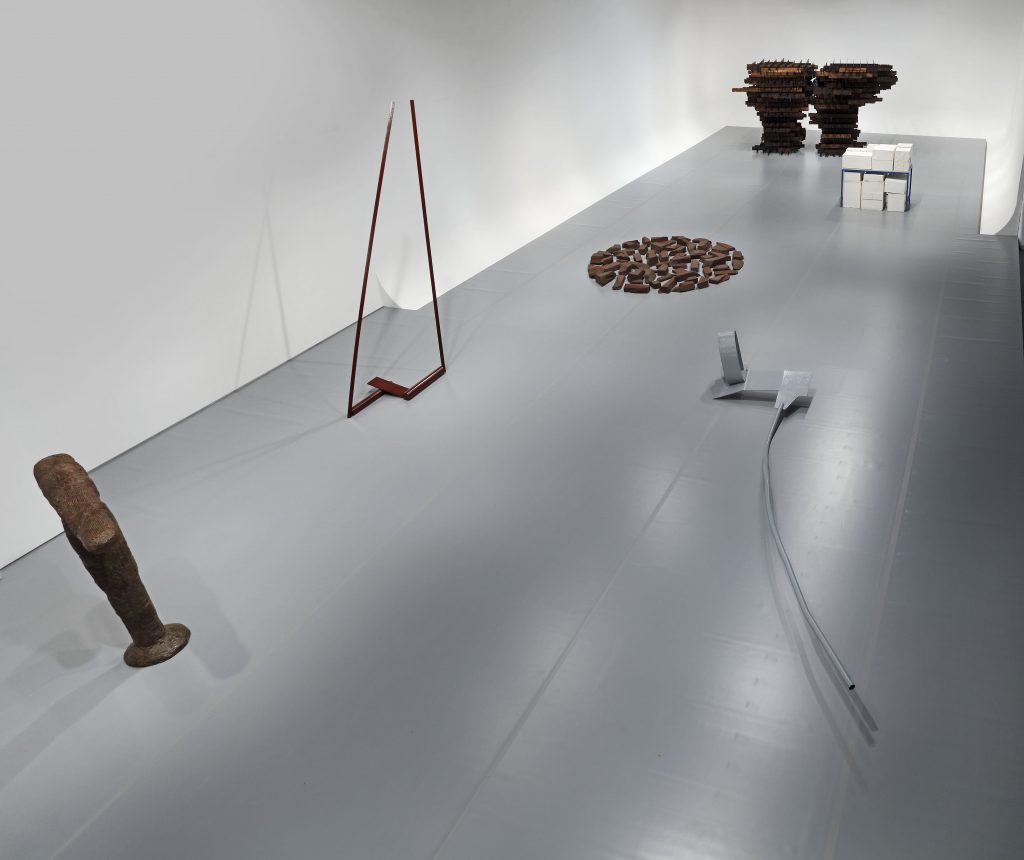
This exhibition of British sculpture was conceived by the gallerist and dealer Karsten Schubert, who died this summerat the age of 57. Schubert put together the list of artists, and the final selection of sculptures was made by his team at the gallery, in close consultation with curator and art historian Jon Wood. Six artists were included: William Turnbull (1922 – 2012); Anthony Caro (1924 – 2013); Barry Flanagan (1941 – 2009); Richard Long (b 1945); Alison Wilding (b 1948); Rachel Whiteread (b 1963). In the main space each artist was represented by a single large work, while upstairs there was a selection of smaller sculptures by all the artists, except Long and Whiteread. This beautiful and thoughtful exhibition, timed to coincide with the Frieze Art Fairs, stands as a memorial to Schubert.
As Jon Wood’s foreword notes, the story of sculpture in post-war Britain is often told in genealogical fashion. According to this widely used narrative format, a series of generations succeed each other, contesting and (although this tends to be less emphasized) continuing the example of those who went before them. The six artists shown here can be assigned to different generations within this familiar story. William Turnbull was one of the ‘Geometry of Fear’ sculptors of the 1950s, working in the aftermath of the Second World War and the shadow of a Third, nuclear one. Anthony Caro was the leading light of the New Generation of the 1960s, whose optimism banished the apocalyptic gloom of the previous decade. Barry Flanagan and Richard Long were both taught by Caro and challenged his authority in the second half of the 1960s, as Anglo-American High Modernism, of which the New Generation sculptors were a substantial part, gave way to the varied experiments of Arte Povera, Minimalism, Post-Minimalism, Conceptual Art, Land Art and Process Art. Alison Wilding is most associated with the New British Sculpture of the 1980s, and was the first artist to join Schubert’s gallery in 1987, continuing to be represented by it. Rachel Whiteread was one of the Young British Artists of the 1990s, whom Schubert was instrumental in promoting, although her art is far from the brash provocations most associated with that group. Whiteread held solo exhibitions with Schubert between 1991 and 1996. Early in her career Whiteread worked as an assistant to Wilding.
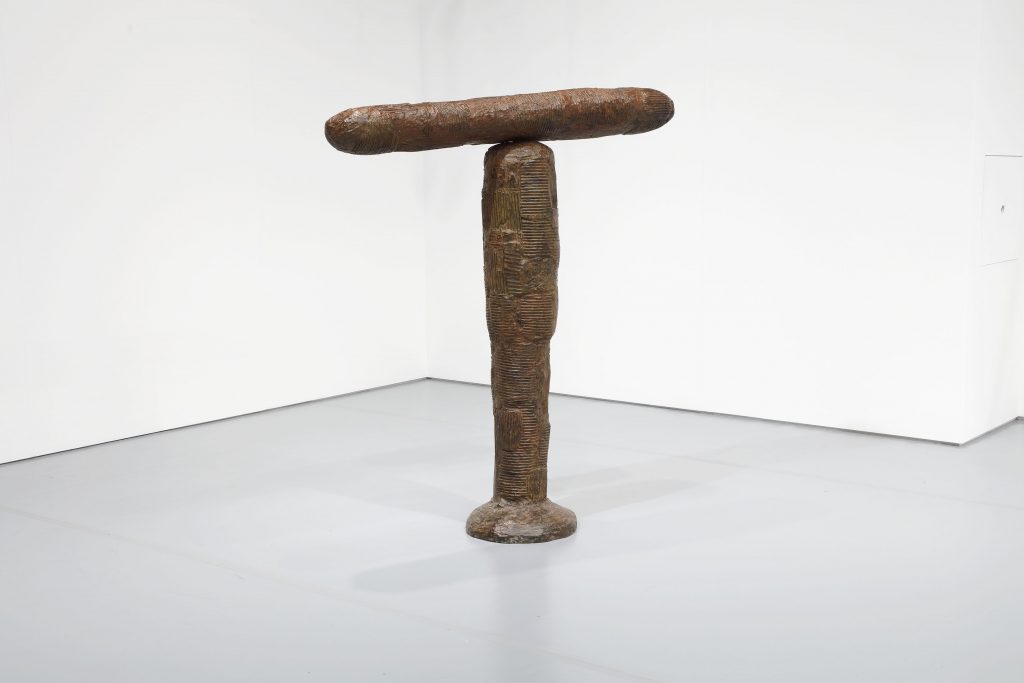
The exhibition clearly engaged with this genealogical approach. Its title implies the development of an argument through history, and the arrangement of the six sculptures in the main space was broadly chronological, making use of the large room’s narrow proportions to suggest an almost linear movement through time. Yet this was a personal look at recent British sculpture rather than a survey with claims to objectivity. It was more concerned with continuation than change, the maintenance of tradition rather than radical breaks with it. All the works shown were singular, static physical objects; objects the viewer stands outside of, which relate to human scale, and which are made of- at the very least- fairly durable materials. They can be directly positioned, more or less, in a relationship to a mainstream tradition of modernism, and to the broader Western and non-Western sculptural traditions that Modernism grew out of and challenged. The elegant and restrained installation emphasized a sense of distance – remoteness, self-containment, even at times to the point of coldness – in the works displayed. I think part of the exhibition’s beauty came from maintaining this distance, even as it presented a group of sculptures which tended towards openness, and which all shared a space with the viewer, unmediated by a plinth. Here, a connection to the past of sculpture was bound up with the sense that these works exist in a special realm, distinct from the everyday. The exhibition’s elegance also contained an element of darkness, a hint of sculpture’s past role in ritual and the display of power; combined with an allusion to the fact that the history of sculpture often comes to us as fragment or ruin.
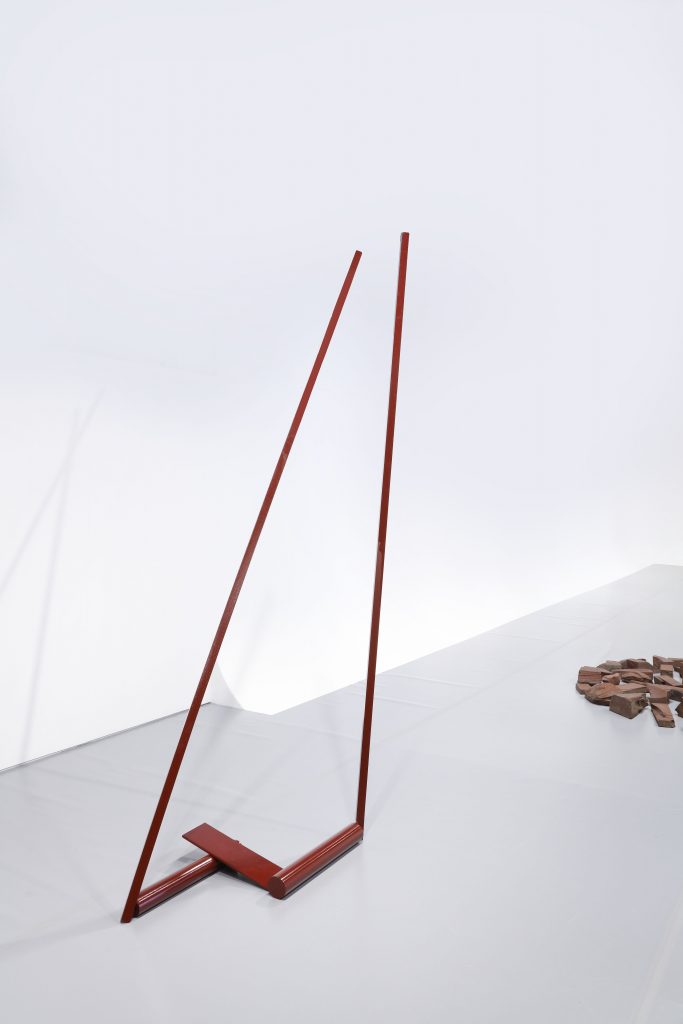
Relationships between the six sculptures in the main room of the exhibition were intellectual or poetical before they were spatial or physical. Although shown in fairly close proximity, each of the works appeared as an isolated, singular case. Each primarily spoke for itself and on its own terms, not impinging on the space of its neighbours. On the one hand this suggested a respect for artists as individuals, as the makers of unique languages, and for individual artworks as the carriers of these languages. On the other, because of the exhibition’s interest in chronology and inter-generational links, it implied a sense of historical propriety. The exhibition seemed to imply that if connections were to be made between these artworks, and between the periods or attitudes they stood as partial proxies for, then these connections should be carefully considered, thought more than felt. To put it another way, these sculptures did not meet each other as whole presences, but were linked to each other through individual characteristics they contain. As complete entities, Turnbull’s ‘Sculpture’ (1956) communicated little with Caro’s ‘Andy’ (1966) or Whiteread’s ‘Garage’ (2005), but through spending time with the exhibition other communalities became apparent, some fairly obvious, others unexpected.
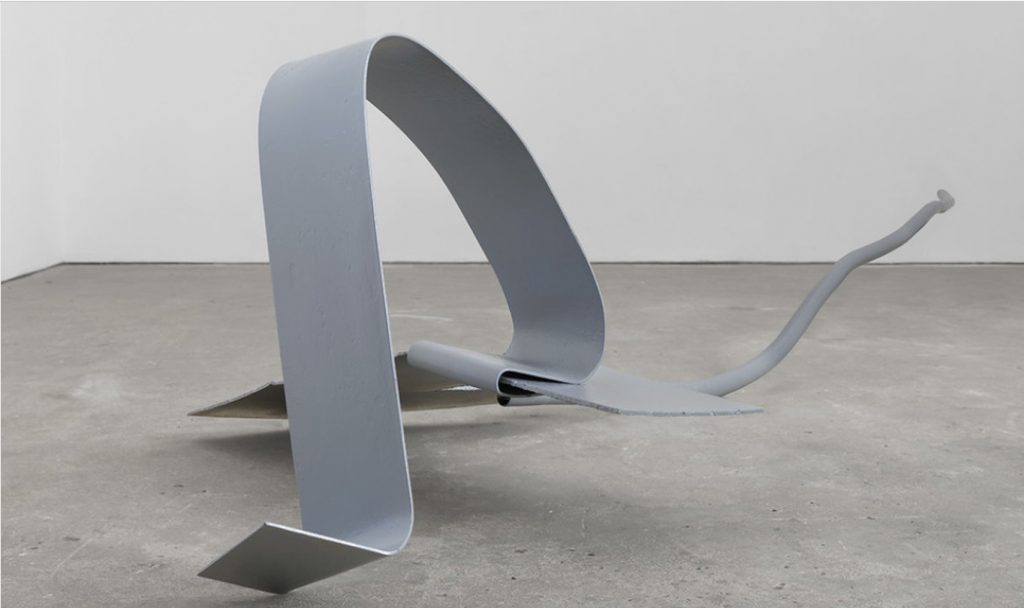
Unlike ‘United Enemies’– a 2012 exhibition at the Henry Moore Institute also curated by Jon Wood, which well captured the diverse hubbub of sculptural activity in Britain during the 1960s and 1970s- ‘Dialectical Materialism’ did little to highlight how confused and contradictory the terrain of sculpture in Britain became from the late 1960s onwards. The choices of the works by Flanagan and Long in ‘Dialectical Materialism’ were particularly striking in this regard. Both could have been represented by works that more obviously and self-consciously broke with previous understandings of what constituted sculpture, and that moved sculpture into the realms of performance or photography, or that more completely questioned the idea of sculpture as a limited object, located in a single place and made of durable, fixed material. Flanagan was represented instead by a work from just before his most radical experiments, and Long by a work from just after his. Flanagan appeared to be closely influenced by Caro here, before the works with rope, sand and canvas with which he established his reputation. Yet despite – or perhaps because of – its closeness to the example of his teacher, Flanagan’s ‘metal 2 ’64’ (1964) clearly illustrated the playful tactility that is at the root of his art. Compared to the Flanagan, and the exhibition as a whole, Long’s ‘Red Slate Circle’ seemed formally cautious and somewhat defensive. His early photographic and text pieces claimed a huge area for sculpture, fusing man with the landscape. Yet within this breadth Long has created a very narrow art.
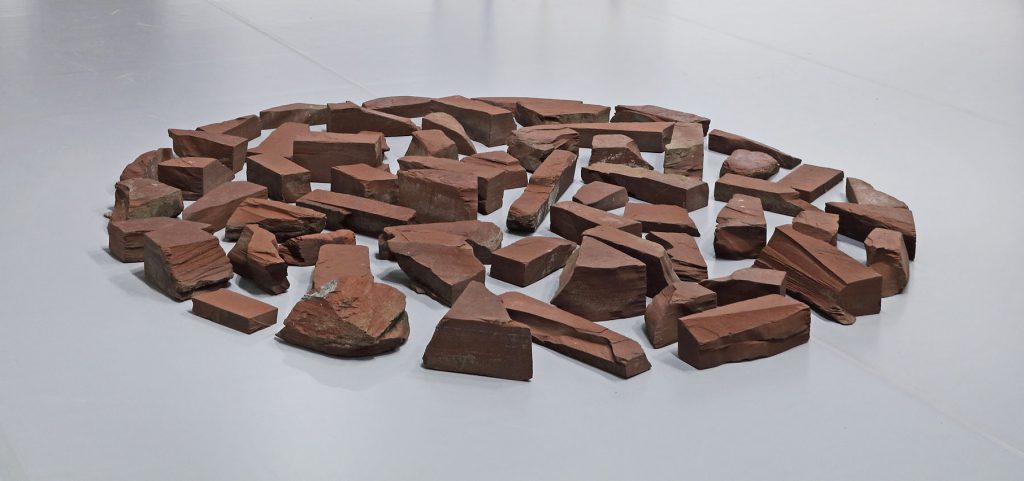
In forming a potent, if conservative, argument for the continuation of sculpture as a special type of object, and in re-stating (while teasing apart) the genealogies with which the period is often characterized, the exhibition advanced an argument for the importance of Alison Wilding in particular. Her sculpture ‘In a Dark Wood’ (2012) was the most recent and largest of the sculptures shown downstairs. Positioned at the far end of the room, it formed the culmination and centerpiece of the display. Here the generational chronology was again tweaked. Whiteread’s ‘Garage’ was shown just in front of ‘In a Dark Wood’, so that Whiteread and Wilding were ordered not according to the timing of their arrival on the British art scene, but by the date their sculptures in the exhibition were made. The argument through time that the exhibition sketches was thus brought to a head in Wilding. ‘In A Dark Wood’ pulled together, at grander, more expansive scale, many of the threads discernable in the exhibition – such as the division of the sculptures into two interacting parts, or the interaction between closed volume and open space.
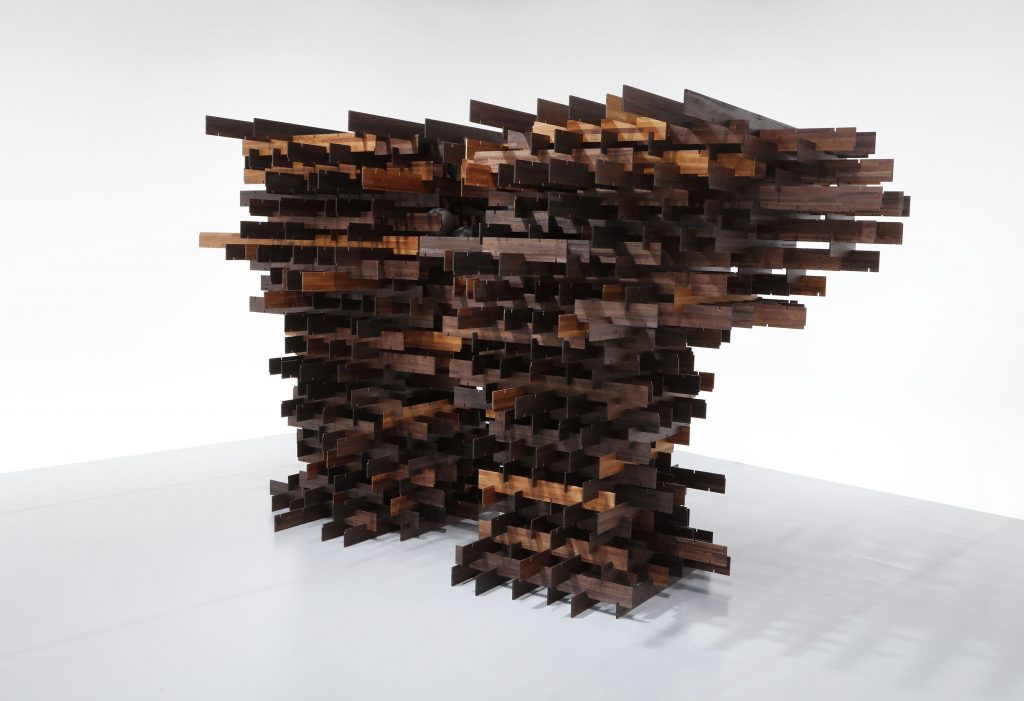
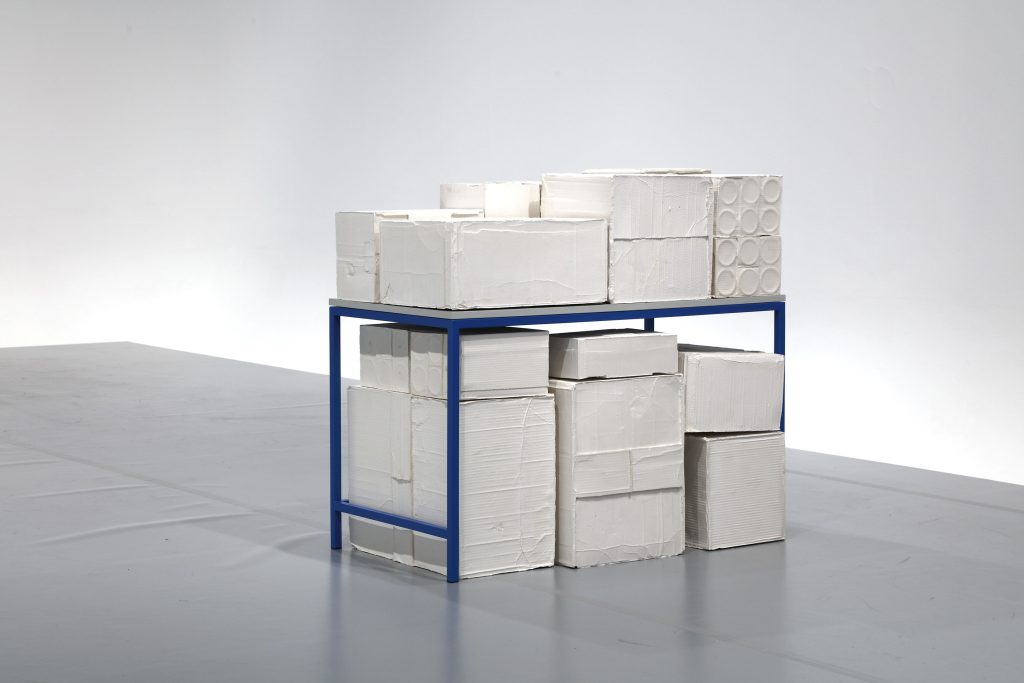
The placement of Wilding at the head of a historical trajectory of post-war British sculpture forms something of a counterpoint to the monograph Schubert’s Ridinghouse imprint recently published on the artist. In it, she is discussed almost exclusively in terms of an international, mainly North American, canon of twentieth-century sculpture, both pre- and post-war. Including a different work by Wilding in this exhibition might have emphasised the more disruptive aspects of her practice, although perhaps not to the extent this could be said of Long or Flanagan. Wilding’s inclusion in ‘Dialectical Materialism’ makes the point that her generation – the New Sculptors of the 1980s –were largely defined by their return to a more traditional notion of sculpture. Her work shows an awareness of the complex de-materialisations of the late 1960s and the 1970s, but is nevertheless primarily concerned with the object. In some senses it appears more pluralistic than New Generation sculpture, although perhaps this is partly because the hardline public and pedagogical stances of the New Generation – and their direct followers –have disguised some of its diversity. I like the idea that the divergence between Wilding and the New Generation can be partly explained by suggesting that where the New Generation looked to sculpture through painting, Wilding looked to sculpture through the psychologically charged spaces of installation art.
‘The sculpture was moving back into the space of the subject, the viewer; that it was doing so through perverse self-limitation on the one hand, and seemingly desperate extensions of the strategies historically available to it on the other; and that the failure of these efforts was in effect the cost of the medium retaining its identity’. 1Vernon, J, ‘Dialectical Materialism: Aspects of British Sculpture Since the 1960s’, Ridinghouse, 2019, p22
Jonathan Vernon’s challenging but stimulating essay argues that sculpture should be seen within real space – human, cultural, social, hence artificial and contingent. He discusses sculpture’s ‘wrongness’, its moments of disjunction or failure, as means through which discipline’s existence in real space becomes apparent. In the exhibition, Vernon’s ‘wrongness’ seemed most convincing in relation to the works by Turnbull, Flanagan and Whiteread, although perhaps I am oversimplifying his meaning. In particular I was struck by how Turnbull and Whiteread were linked by their use of cardboard in lending a sense of uncertainty and redundancy to a cast volume: in different ways they create sculptural form which implies a lack, rather than a positive assertion. Yet the exhibition’s focus on Wilding seemed to undercut Vernon’s essay. ‘In A Dark Wood’ cannot be very well explained by ‘wrongness’: whilst the sculpture could not be described as simply optimistic or affirmative, it contains a distinct note of triumph, particularly as it was displayed here, preceded by Long’s ground-hugging elements and Whiteread’s fragile redundancy. Its theme almost appeared to be that of apotheosis. The perspectives caused by its interlocking and expanded three-dimensional grid also positioned the sculpture – to a greater degree than anything else in the show – in a virtual, ideal space.
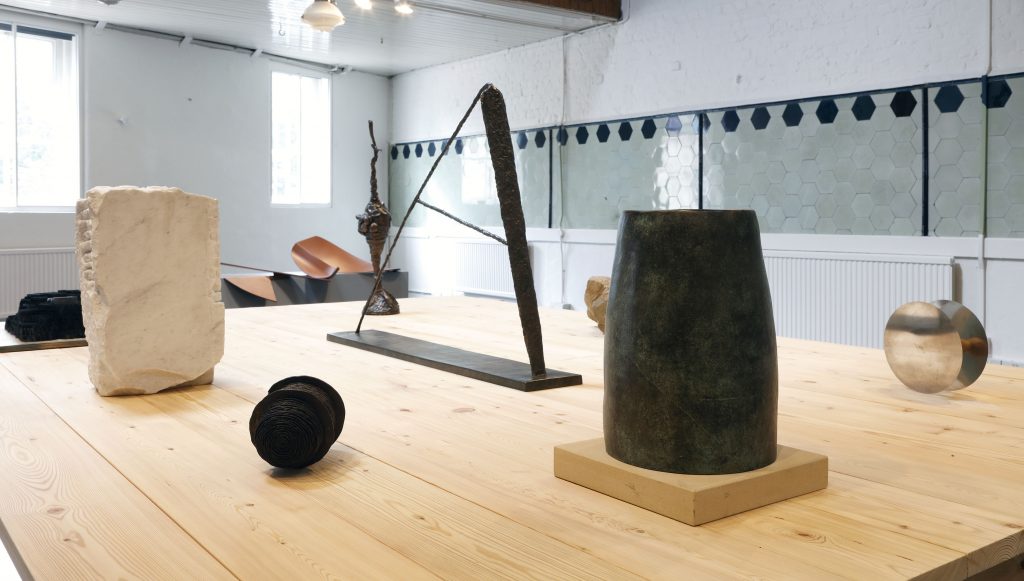
The upstairs display of smaller sculptures tipped over from sculpture as object, to sculpture as ‘objet d’art’. Five Flanagans, four Turnbulls and nine Wildings were arranged on two tables. There were beguiling plays with tactility, the inviting and discouragement of touch; but the display was dominated by Caro’s ‘Table Piece LXXVIII’ (1969), shown singularly on a plinth to one side. I am to some extent a Caro partisan, but for me this was still the stand-out work in the exhibition as a whole. Caros from the same years, using similar parts, can appear overly pictorial; but that was not the case here. Perhaps more than any work, upstairs or downstairs, ‘Table Piece LXXVIII’ opened out to the space around it, was involved in the whole space, and compelled attention across it, as if funnelling the space of the room into its deceptively simple structures. Caro’s ‘Andy’ (1966), shown downstairs, is unusual in its vertical orientation (Wood included a similarly vertical Caro in ‘United Enemies’, ‘Whispering’ (1969)). The strength and openness of ‘Table Piece LXXVIII’ made me wonder how the main display would have looked if it had included a larger, horizontally orientated Caro from the 1960s, one of his ‘grand machines.’
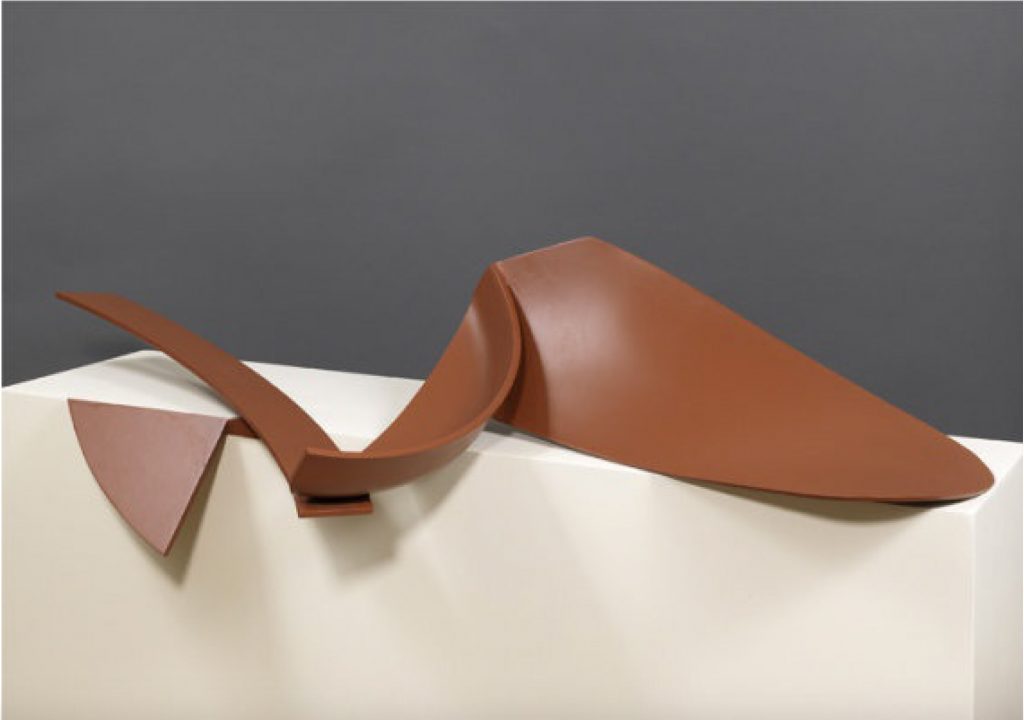
Installation view of ‘Dialectical Materialism’ at Karsten Schubert, London 2019
Installation view of ‘Dialectical Materialism’ at Karsten Schubert, London 2019
Alison Wilding, ‘Solenoid’ (2015), Iranian string, wax, forged iron and wire, 14.5 x 22.5 x 13.5cm
One thought on “Sam Cornish on ‘Dialectical Materialism’ at Karsten Schubert”
Comments are closed.
This was a very … brown … exhibition. The dominance of the colour conveyed a warmth of love on Karsten Schubert’s part, as well as a rawness of materials sourced from the earth. It also seemed to plug the work into sometime long ago. For instance, contrast William Turnbull’s excellent ‘Mask I’ 1981 with Jonathan Baldock’s ‘Personae’ at Stephen Friedman Gallery til 9 Nov, which could easily be the former’s offspring. Alison Wilding’s ‘In a Dark Wood’ appeared as transformer toy meets Gruffalo writ large, with the fierce and sturdy impact of Damien Hirst’s shark. Despite the similarity in its opened / closed approach to composition, for me, it lacked the fascination of its forebears, from ‘Assembly’ to ‘Endgame’. I enjoyed this essay though I wanted it to continue in the same way I wanted this exhibition to continue, and for both to fill in the dots between on the journey of sculpture from the 60s til now. It’s a brave thing to take on this show and I’m so pleased you did.